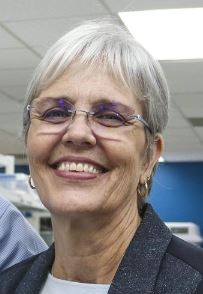Different CROs For Different Purposes – One Biotech's Selection Process

By Ed Miseta, Chief Editor, Clinical Leader

The human body does a pretty good job of protecting your health. If you get a cut or bruise, or skin your knee, your body will heal itself. If you catch a cold or virus, your antibodies kick in to defeat the bug. Patricia Lawman, cofounder and CEO of Morphogenesis, believes more focus must be placed on how we can develop therapies that help our bodies specifically eliminate diseases such as cancer by harnessing the innate intelligence of the human body.
“We need to gain a better understanding of the underlying mechanisms of diseases to target them in a safe and effective manner,” she says. “That is where the biotech industry comes into play. Biotech companies try to figure out the biological basis of how our bodies function and on what is causing the disease so we can focus on fixing that.”
Morphogenesis has produced a cancer treatment (a bacterial gene) that is injected directly into a tumor. It is cancer agnostic and has shown safety and efficacy in mouse models and in cats, dogs, and horses with naturally occurring disease. The company has advanced into testing on humans and is now preparing for a Phase 2 study that will be launched this fall.
Clinical Expertise Is Needed
When it came time to find CRO partners to navigate the clinical trial process, Morphogenesis conducted thorough searches and selected partners based on their needs in a given situation. The Company’s major needs were in two main categories: regulatory and clinical operations. In the beginning, a CRO with specific expertise in first-in-human regulatory requirements and filings was needed. The company required preliminary support and clinical expertise to introduce their product to the regulatory authorities in a meaningful way to gain regulatory approval for their clinical trial to commence.
Management of clinical operations requires different areas of expertise and capabilities. When it was time to engage a CRO to help with data management and safety monitoring in a Phase 1 trial, Lawman had several discussions with network connections who understood the CRO business. Lawman states these discussions led to selecting a firm by “knowing what to look for and understanding what was really needed.”
Morphogenesis’ first Phase 1 trial was performed at a single site, Moffitt Cancer Center, and management of the trial was a joint project between Morphogenesis and a small CRO firm with expertise in small-scale first-in-human trials.
When the company expanded cancer indications in a second Phase 1 trial across multiple sites in the U.S., it needed to engage a larger CRO with a more national reach that could support, in a full-service manner, a comprehensive clinical operation.

Lawman notes that it can be challenging to compare and contrast CRO proposals and bids on a project but with experience and time, relationships can be established with these CRO partners and a lot more clarity can be gained on the various functions they perform and services they provide.
“We have been fortunate to find the right CRO partners needed at the time we needed them,” added Lawman. When the company’s melanoma IND application was being put together, the CRO engaged for regulatory submissions was willing to provide the advice they needed to get it done without the exorbitant costs of a full-service approach. To this day she continues to work with that company for their regulatory expertise.
The Search For A Larger Provider
When Morphogenesis was ready to move into Phase 2 trials, Lawman felt it was time to conduct a more thorough CRO selection process. The company sent RFPs to 12 different providers and received responses back from 10 of them. After conducting face-to-face interviews, the list was narrowed down to three finalists.
“There were three companies left, and we liked each one for different reasons,” says Lawman. “We spent a lot of time reflecting on what we might expect from each one. We looked at each company’s expertise, global reach, and the probability of them remaining with us for the long run. We ended up selecting a top 5 CRO as our partner.”
Lawman trusted that group to help her company develop its clinical trial strategy. Although she knew her product would work on virtually any type of cancer, decisions had to be made around which ones to pursue in clinical trials. There were also discussions around competition, time to market, and regulatory hurdles. She notes that a large global CRO can help walk a company through those decisions.
“By that point we had a chance to meet and interact with the people we would be working with,” says Lawman. “We would also have to open additional sites and their team was able to connect us with KOLs who could assist us with the selection process.”
Advice From The FDA
Another partner Lawman had throughout this process was the FDA. Her first contact with them came via the pre-IND meeting.
“We presented our protocol and any other thoughts we had on the conduct of the trial,” says Lawman. “They provided us with feedback, which we incorporated into the trial design. Eventually we submitted our IND. They made a couple of additional requests but gave us the go ahead. That was a big step forward for us, and we were totally intimidated. Since then, however, we have kept them informed of everything we do and ask if we are not sure of something.”
Lawman stresses the importance of an open relationship with the regulatory agencies. She notes she could have hired more consultants and KOLs to answer her questions, but those professionals must be paid and can be expensive. Small biotech companies do not have a lot of cash to throw around. She learned early on that the FDA is easy to work with. Most of the time she was able to call them to get questions answered.
“The information you get comes right from the source,” she adds. “We did not have to worry if the information we received was correct. We did not have to pay for the advice, and the quick response times allowed us to keep moving forward. It is important to not get stymied or held back at any time. As a small company, you always have to be moving forward.”
